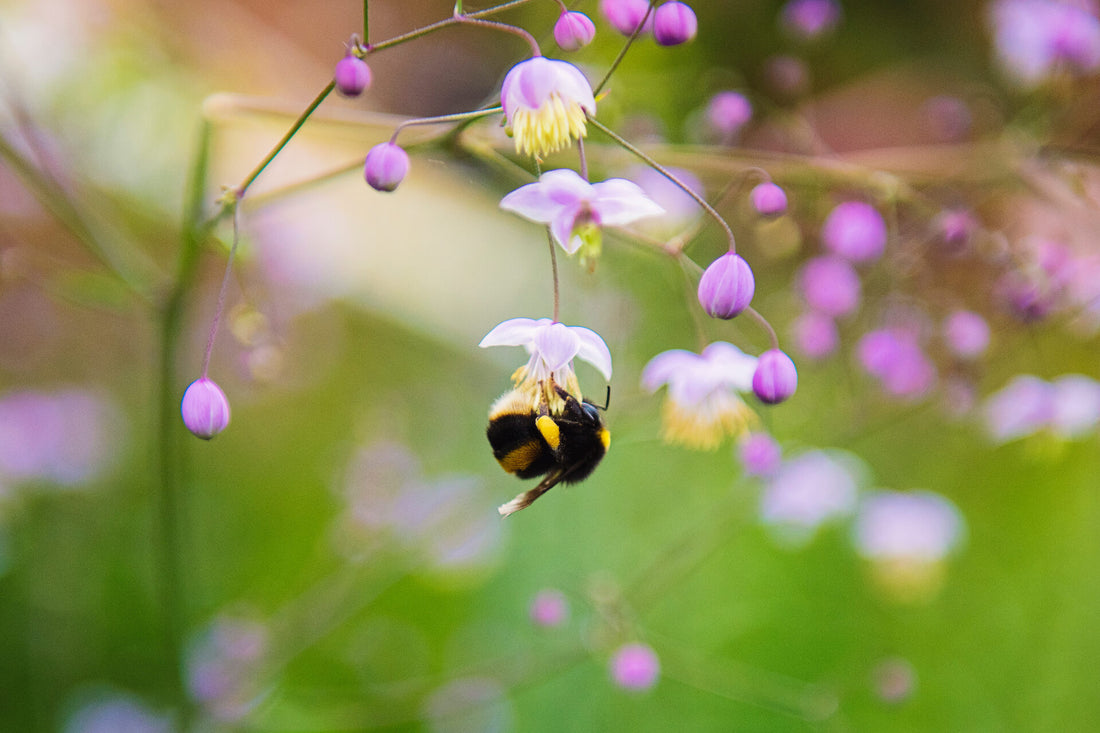The Buff Bumblebee
Did you know that they are one of the biggest and buff bumbles out in the UK?
Types of Bumblebees
There are many types of bumblebees, some common sighted-ones include red-tailed, white-tailed, field and buff-tailed bumblebees. (You can find out more about them on the rest of our Bee ID page.)
Where Can You Find Buff-Tailed Bumblebees?
As one of the most common bees, they are found in lowlands areas in the UK. Areas such as grassland and towns and gardens are buff-tailed bumblebee habitats.
Are Buff-Tailed Bumblebees Solitary or Social?
Bumblebees are social insects and have colonies of up to 200 worker bees.
However, they nest underground instead of living in hives like honey bees. The queens will also hibernate alone as solitary insects.
Do Buff-Tailed Bumblebees Make Honey?
Not as we know honey. Our honey comes from honey bees since bumblebees collect nectar to create a ball of pollen instead. This is food for her eggs as a bee winter store. They don't make enough for us to collect, and they are considered ‘honey pots' of nectar instead of the honey we know and love.
They don't need to store food for the winter like honey bees for their colony either as the workers and males die by the end of the season. Only the new and younger queens will survive and hibernate.
Now you know the Buff-Tailed Bumblebee basics, here are some of our top facts to get you buzzing…
Fun Facts
- Queens can be 2cm long or more in size!
- Bumblebees won't die if they sting you as they don't have a barbed stinger.
- But don't worry! Like many bumbles, buff-tailed bumblebees are non-aggressive and are considered safe around pets and children (if you don't deliberately agitate them!)
- Buff-tailed bumblebees have been also known as ‘nectar robbers'. If their tongue cannot reach the nectar at the middle of a flower, (as they have small tongues for bumblebees), they bite a hole at the bottom to suck out the nectar.
- Bumble bees bump into things about once per second when in flight due to wind patterns. They really are clumsy!
- Queens can be seen with pollen baskets attached to them.
- Male buff-tailed bumblebees secrete a pheromone whilst creating mating circuits to attract females. They do this in the early hours or after it has rained.
So, Why Should We Care About Bees?
Bees like buff-tailed bumblebees are our greatest friends as they pollinate planet Earth.
Did you know that 90% of wild plants and 75% of our crops rely on animals pollinating them?
But sadly, many are dying out due to habitat destruction, pesticides and climate changes that mess with bee life cycles.
Everyone can help our bees in crisis.
You learn how to correctly save a bee with sugar water and find more bee-rrilant information on our bee blog.
One of the best ways to help our bee friends is prevention.
Planting bee-friendly flowers in your gardens and letting your spaces grow wild creates little pit-stops for your busy workers.


